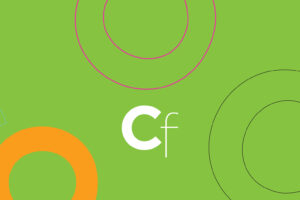Pitch Slapped: The recent drought of new agency business, and some reasons to be cheerful


SomeOne founding partner Simon Manchipp takes us inside the new business rollercoaster, from AI anxiety to budget ghosts, and makes some surprisingly upbeat predictions about the next 12 months.
‘New business’ is a phrase that strikes fear into much of the industry. New business is the lifeblood of any creative practice, and cash flow is the biggest killer of business. Still, we don’t talk about NewBiz enough. We’re far more interested in aesthetics, colours, and the visual themes that surround the creative output.
But when it comes to business survival, the input—the generation of new business—is far more critical. Without it, cash flow stalls, and as we all know too well, cash flow is king. Without it, it’s game over. Last year, it was pretty sobering to see the creative industries under such pressure when it came to new business. A quick glance at LinkedIn revealed three major themes emerging:
1. Anything you can do, we can do better
While work seemed to disappear into thin air, it was, in fact, being inhaled in-house. In-house design was easier to control and pay for and—with so many creatives short of work—easier to recruit for.
2. Oh, look! It’s AI
As purses tightened and wallets contracted, shiny AI options tempted cash-poor clients away from agencies, lured by low-friction, quick-turnaround solutions via tools like Midjourney and other apps.
3. Spending, Voting, Guessing
Perhaps the most tangible contributor to the new business drought was the backdrop of global economic instability and political uncertainty. Not to mention a war very close to home.

Reasons to be cheerful
So, if last year was catastrophic for many, including new business in the creative industries, how is this year shaping up? Perhaps surprisingly, the first quarter of this year has made me feel more optimistic.
While a significant number of clients remain seemingly seduced by the instant gratification and low cost of AI solutions, here at SomeOne, we’re seeing many clients who insist on the human touch—those who crave emotion, originality, and creative thinking that AI, as an aggregator of the past, simply cannot provide for the future. (Oh, and the small matter of getting the liability aspect past their lawyers.)
I’m meeting clients who are asking for a deeper need for fresh thinking and originality, things that AI struggles to offer meaningfully. I’m also seeing increased demand for:
-
Cultural insight: Understanding nuance, emotion, humour, and irony—especially across different regions and communities—requires human context. AI remains famously lacking in charm and, try as it might, deeply unfunny.
-
Strategic thinking: Deciding why to rebrand, what the long-term business goals are, or how to position a product emotionally in the market. These all come from human demands.
-
Lateral originality: AI draws from what’s already been done. It’s deeply challenging for it to produce something truly disruptive, effective or trend-setting without human input.
-
Brand voice: Cohesive, layered narratives and a distinctive tone still benefit hugely from human writers. (You can spot a bot a mile off.)


Dawning of a new era
In-house teams continue to expand their remit, taking on more work that would traditionally go to agencies. However, we’ve already won several projects this quarter that involve close collaboration with internal teams. Our job is partly to make the internal teams famous internally. But more than that, these partnerships allow us to provide something invaluable: external stimulus and the confidence to challenge senior stakeholders in ways that internal staff cannot easily do.
That’s one of the great advantages of an external agency: we’re paid to serve the brand, but we’re not beholden to its politics or hierarchy. We can help push for ideas that are bolder, more progressive, and ultimately more effective, as we don’t risk getting a P45.
Of course, politically and economically, things remain far from smooth. The upheavals in the US and elsewhere have only underscored that we are no longer in a period of transition but in an entirely new era. I’m hearing clients begin to accept that volatility is now the norm. In this environment, the need for adaptive, intelligent and creative brand and marketing solutions is greater than ever.
Moving on up
Interestingly, last year wasn’t just defined for some by a lack of new business; there was also a noticeable lack of outcomes. The creative press wasn’t exactly lit up with bold, exciting campaigns. Instead, we saw a stream of light refreshes and mildly interesting updates.
Happily, things appear to be on the up. I’m seeing quite a list of interest from interesting places. Rebrands are being commissioned and launched more frequently. (For context, at SomeOne, we have around 30 current clients, have launched a major project every two weeks in the last three months, have had 50+ new business enquiries and have responded to around 20 pitches, many of which have converted to wins.) Conversations with other agencies suggest the tide may be turning towards a more positive outlook.

From my perspective, the signs are encouraging. Our phones are ringing more often, emails are arriving more frequently, and clients are starting to ramp up their activity and turn away from previous shiny and distracting AI.
It’s not that in-house agencies, AI efficiencies or economic challenges have disappeared. Rather, businesses are realising that waiting on the sidelines risks falling behind. FOMO is more than missing out in the business world; it can mean going bust. Those who continue to invest in their brand are the ones who stay visible and relevant.
That commercial imperative has always been the engine of branding and marketing. After all, branding only exists where there is competition, and there’s no value in having the best product, service or organisation if nobody knows it exists.






